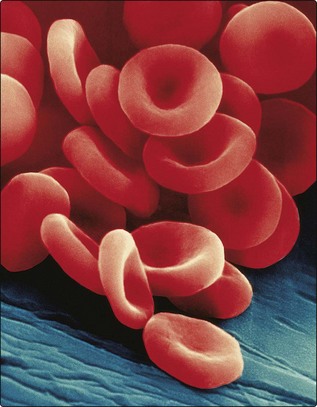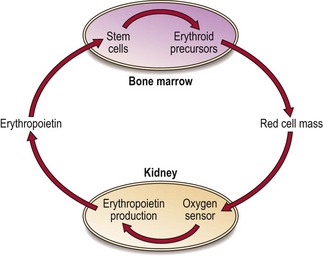2 Prior to discharge from marrow sinuses into the peripheral blood, red cells shed their nuclei. This gives the advantages of reduced weight and transformation into a biconcave disc with increased deformability compared with the more rigid spheroidal nucleated precursor (Fig 2.1). Fig 2.1 Scanning electron microscope picture of mature red cells showing clearly the characteristic biconcave shape. (Copyright Dennis Kunkel Microscopy Inc.) Unlike other growth factors, erythropoietin is mainly synthesised by the peritubular endothelial cells of the kidney. Production is triggered by tissue hypoxia (lack of oxygen). Cells can sense hypoxia via mediators such as the transcription factor HIF (hypoxia-inducible factor). HIF activates genes vital in the adaptive response to hypoxia including the erythropoietin gene. Erythropoietin molecules bind to specific membrane receptors on primitive erythroid cells in the bone marrow and induce maturation. The increase in red cells released into the blood stops when normal oxygen transport is restored – this feedback circuit is illustrated in Figure 2.2.
Red cells

Erythropoietin
Oncohema Key
Fastest Oncology & Hematology Insight Engine




